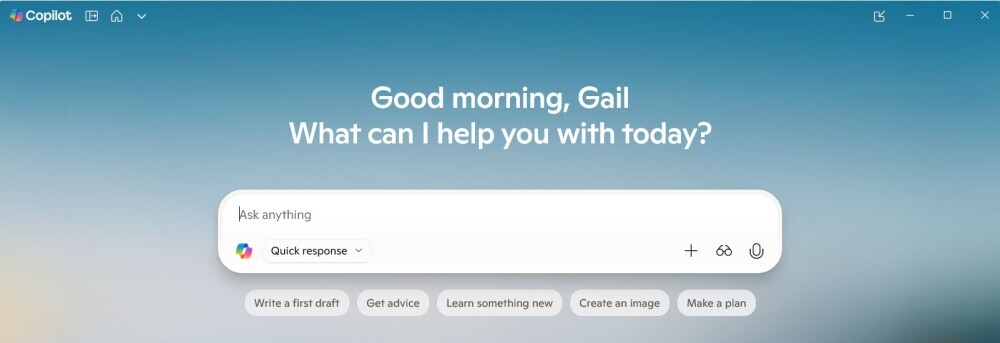Artificial intelligence has become the ultimate business partner for modern entrepreneurs. What once felt like science fiction is now helping creators write blog posts, design images, automate emails, analyse data and even edit video in real time. Yet with so many AI platforms competing for attention, it can be hard to know which one truly suits your goals. So what are the current leading AI platforms for online entrepreneurs? I know which ones I use and prefer and I’ve put together some of the features and benefits of 10 of the top AI platforms currently in use.
Whether you’re a solo blogger, affiliate marketer or small business owner, understanding the strengths of each AI platform can help you choose the right digital assistant to power your growth. Below is my overview of ten of the most talked-about AI systems in 2025, going into 2026, from ChatGPT-5 and Claude 3 Opus to Grok 4 and Mistral Large. Each one offers something slightly different, from multimodal creativity and automation tools to privacy-first control and enterprise-level compliance.
All details and prices are correct at the time of publication, but all this may change since the AI industry is moving faster than ever!
This article contains some affiliate links, which means that if you decide to buy, I may receive a small commission at no extra cost to you. As an Amazon Associate, I earn from qualifying purchases. This helps me keep My Online Income growing and free for readers. I appreciate your support. For more information, see our Affiliate Disclosure.
Quick Comparison Table
| Platform | Pricing Snapshot* | Image / Visual Capability | Best Fit For |
|---|---|---|---|
| ChatGPT (OpenAI) | Consumer plan ~US$20/month; API token rates vary by use | Very good – image generation and editing supported | Solo creators, bloggers and entrepreneurs who need flexibility |
| Claude 3 Opus (Anthropic) | API ~US$15 input / ~US$75 output per 1M tokens | Moderate – interprets images but cannot yet generate or edit | Long-form writers, educators and compliance-based industries |
| Gemini 1.5 Pro (Google) | API input ~$1.25 / output ~$10 per 1M tokens; consumer plan ~$19.99/month | Very good – handles text, image, audio and video | Users in Google Workspace, researchers and multimedia creators |
| Microsoft Copilot | £25 per user per month (Microsoft 365 Business); Copilot Pro $20/month for Personal or Family users | Yes – integrates DALL·E image creation via Designer and Bing Image Creator | Microsoft 365 users needing productivity, formatting and visuals |
| Grok 4 (xAI) | API from ~$0.20 per 1M input tokens; premium plans up to ~$300/month | Good – image generation likely in development but not fully documented | Social-media creators, trend-driven brands and marketers |
| LLaMA 3 (Meta) | Open source; cost depends on hosting and compute | Possible with add-ons – requires extra setup | Developers, innovators and multilingual content creators |
| Mistral Large (Mistral AI) | Deployment and hosting dependent; no fixed consumer pricing | Limited – text focused, visuals require separate tools | Privacy-conscious users and businesses needing control |
| Watsonx (IBM) | Enterprise licensing; custom quotes | Limited – multimodal, but not built for image creation | Regulated sectors such as finance, law and healthcare |
| AWS Bedrock (Amazon) | Usage-based pricing by model and region | Good – supports multimodal pipelines with technical setup | Developers and businesses building automation or infrastructure |
| Jasper AI | Creator plan from US$49/month; Teams plan from US$125/month; Business plan custom | Excellent – Jasper Art powered by DALL·E and Stability AI included in all plans | Marketing professionals, affiliate marketers and creative entrepreneurs |
1. ChatGPT 5 (by OpenAI)
What it is / Core offering:
ChatGPT 5 is the latest version of OpenAI’s general-purpose AI assistant. It supports text, image, audio and video inputs and is designed for real-time reasoning, persistent memory and wide accessibility.
Who it’s for:
Solo entrepreneurs, content creators, online educators and small business owners who want a flexible tool for writing, automation, customer support and brand building.
Key features:
- Multimodal support for text, image, audio and video
- Memory and personalisation features that remember your brand style
- A strong ecosystem of integrations and plugins
Pricing structure:
- Consumer subscription: ChatGPT Plus about US$20 per month (UK equivalent applies)
- API / developer pricing: image generation API model “gpt-image-1” costs from about US$0.01 to US$0.17 per image, depending on quality. Text models use token-based pricing via OpenAI’s API.
Image creation and multimodal capability:
Yes. OpenAI supports image creation and editing through its API. For bloggers and creators, it means you can generate original visuals for posts, thumbnails and social content without a separate tool.
Verdict:
If you want one strong, flexible platform that handles writing, visuals and automation, ChatGPT 5 is a great choice. It’s easy to use, powerful and offers good value, though heavy API use can add up.
Note on naming:
Although this article refers to ChatGPT 5 for clarity, OpenAI has not officially released or named a model “GPT-5.” The current public version of ChatGPT is powered by GPT-4-turbo, which includes many of the features people associate with the next generation of AI, such as multimodal input (text, image, audio and video), improved reasoning and memory. Because many users and news outlets informally call it “ChatGPT 5,” this article uses that label for simplicity.
 ChatGPT is one of the first and most popular AI platforms to reach a wide market.
ChatGPT is one of the first and most popular AI platforms to reach a wide market.
2. Claude 3 Opus (by Anthropic)
What it is / Core offering:
Claude 3 Opus is Anthropic’s premium model. It focuses on long-context handling, ethical alignment and a safety-first approach, ideal for thoughtful and compliance-sensitive tasks.
Who it’s for:
Creators and businesses that value accuracy, governance and emotional nuance, such as educators and professionals in regulated industries.
Key features:
- Exceptional long-context reasoning
- Ethical and safe design
- Excellent for reflective writing and deep analysis
Pricing structure:
- API pricing: around US$15 per 1M input tokens and US$75 per 1M output tokens
- Lower-cost models such as Haiku and Sonnet are available
Image creation and multimodal capability:
Claude 3 can interpret and reason about images but cannot currently generate or edit them. For creators who mainly write, this is fine, but you’ll need another tool for visuals.
Verdict:
Perfect for in-depth writing, educational content and compliance-focused work. It’s one of the most thoughtful models available, though more expensive than some others.
3. Gemini 1.5 Pro (by Google DeepMind / Google)
What it is / Core offering:
Gemini 1.5 Pro is Google’s premium AI model for advanced multimodal use, combining text, image, video and audio processing with strong integration into Google Workspace and Cloud.
Who it’s for:
Businesses and creators who already use Google tools and need large-scale workflows, from research to content production.
Key features:
- Handles over 1M tokens in a single session
- Deep integration with Google Docs, Drive and Cloud
- Multimodal features for text, image, audio and video
Pricing structure:
- API pricing: from about US$1.25 per 1M input tokens and US$10 per 1M output tokens
- Consumer subscription: Gemini Advanced at about US$19.99 per month
Image creation and multimodal capability:
Yes. Google’s Gemini models include a “Flash Image” generator that can create images up to 1024×1024. For content creators, this makes Gemini a complete package for text and visual work.
Verdict:
Ideal if you already work within Google’s ecosystem. It offers excellent power for mixed media creation and research, but may be more than most solo creators need.
 AI is being used in all kinds of content creation, marketing and research.
AI is being used in all kinds of content creation, marketing and research.
4. Grok 4 (by xAI)
What it is / Core offering:
Grok 4, developed by xAI, combines reasoning with social media-style conversation. It’s designed for creators who want fast, witty, trend-aware AI support.
Who it’s for:
Social media marketers, brand builders and educators who work with trending content, memes and real-time engagement.
Key features:
- Strong context and reasoning for social content
- Real-time trend analysis
- Web search integration
Pricing structure:
- Developer/API: from about US$0.20 per 1M input tokens for small usage
- Subscription: premium plans up to around US$300 per month for heavy users
Image creation and multimodal capability:
Yes. Grok may support image generation and editing, though Grok’s image generation capabilities are not yet fully documented. While it’s likely in development, there’s no public confirmation of full image editing support. For content creators, it may be useful for quick visual and social posts.
Verdict:
If your focus is social content and brand engagement, Grok 4 is fun and practical. It’s less formal than enterprise models but great for creative marketing work.
5. Microsoft Copilot
What it is / Core offering:
Microsoft Copilot is an integrated AI assistant built into Microsoft 365 and Windows. It uses OpenAI’s GPT-4-turbo model and adds productivity tools directly inside Word, Excel, Outlook and PowerPoint. It’s designed to help professionals and business owners save time on everyday tasks.
Who it’s for:
Entrepreneurs, marketers and educators who already use Microsoft 365 and want AI to support writing, data analysis, document creation and email management.
Key features:
- Integrated within familiar Microsoft applications
- Creates, edits and formats documents, emails and presentations
- Works alongside Microsoft Edge, Windows and Teams
- Data remains within Microsoft’s secure business cloud
Pricing structure:
- A free version of Copilot is available in Windows and Edge with limited features
- Microsoft 365 Copilot add-on for business users: around £25 per user per month (billed annually) on top of a Microsoft 365 Business or Enterprise plan. There is a Copilot Pro plan which is $20/month for individuals using Microsoft 365 Personal or Family, which offers deeper integration for non-enterprise users.
- Enterprise pricing varies by licence type and user volume
Image creation and multimodal capability:
Copilot includes access to DALL·E image generation through Microsoft Designer and Bing Image Creator. Users can create images, visual assets and graphics directly from prompts inside Word or Edge, which is handy for marketing and blog visuals.
Verdict:
If you already work inside Microsoft 365, Copilot is one of the easiest and most seamless ways to bring AI into your business. It’s especially strong for productivity, content formatting and branded visuals, though it’s less suited to developers or those wanting deep API control as it is less customisable than many open platforms.
 Copilot integrates easily with other Microsoft products.
Copilot integrates easily with other Microsoft products.
6. LLaMA 3 (by Meta Platforms)
What it is / Core offering:
LLaMA 3 is Meta’s open-source large language model, designed for developers and global use. It’s a flexible foundation for those who prefer to build their own AI tools.
Who it’s for:
Developers, innovators and multilingual creators who want full control rather than a closed service.
Key features:
- Fully open-source and customisable
- Multilingual capability
- Free to use if you have hosting and computing power
Pricing structure:
Open-source, so the only costs are hosting and infrastructure.
Image creation and multimodal capability:
LLaMA 3 is text-based, but developers can connect it to external image generation tools. It’s flexible but not plug-and-play.
Verdict:
Excellent for technical users and multilingual projects. Most solo entrepreneurs will find commercial services easier to use.
7. Mistral Large (by Mistral AI)
What it is / Core offering:
Mistral Large is an open-weight model that can be deployed privately. It’s popular with businesses that want data privacy and full control.
Who it’s for:
Entrepreneurs and teams that deal with confidential IP or want to host AI internally.
Key features:
- Open weights for private use
- Multilingual
- Custom deployment flexibility
Pricing structure:
No fixed consumer pricing. Costs depend on your hosting or licensing setup.
Image creation and multimodal capability:
Mistral Large focuses on text, but you can add image tools to your own setup if required. It’s better suited to developers than non-technical users.
Verdict:
Ideal if privacy and control matter most. For everyday creators, though, it’s more work than reward.
8. Watsonx (by IBM)
What it is / Core offering:
Watsonx is IBM’s enterprise AI platform. It focuses on transparency, compliance and fine-tuning for sectors such as finance, healthcare and law.
Who it’s for:
Businesses in regulated industries or organisations that need strict governance.
Key features:
- Data governance and audit trails
- Industry-specific fine-tuning
- Integrates with existing IBM tools
Pricing structure:
Enterprise licensing with custom quotes.
Image creation and multimodal capability:
Watsonx can handle multimodal data, but isn’t focused on image creation. It’s built for data-driven business workflows.
Verdict:
Strong for enterprise and compliance. Not necessary for most small businesses or creative entrepreneurs.
9. AWS Bedrock (by Amazon Web Services)
What it is / Core offering:
AWS Bedrock is Amazon’s AI platform that offers access to several foundation models under one roof. It’s integrated with the AWS ecosystem for large-scale automation.
Who it’s for:
Developers and businesses building chatbots, backend automation or scalable systems.
Key features:
- Multi-model access
- Deep integration with AWS services
- Enterprise scalability
Pricing structure:
Usage-based billing that varies by region, model and usage.
Image creation and multimodal capability:
Yes, through the underlying models available on the platform, though setup requires technical skill.
Verdict:
Perfect for advanced developers or scaling businesses. For everyday creators, it may feel too technical.
10. Jasper AI
What it is / Core offering:
Jasper is a marketing-focused AI platform designed to help entrepreneurs, agencies and content creators produce branded content quickly and consistently. It now runs on a proprietary AI engine that automatically selects the best model for each task, drawing from providers such as OpenAI, Anthropic and Mistral. The platform is fine-tuned for marketing, copywriting and brand storytelling.
Who it’s for:
Online business owners, affiliate marketers, agencies and creative professionals who want to generate high-quality marketing content, maintain a consistent voice and save time on writing, visuals and planning.
Key features:
- Templates for blog posts, ad copy, emails and product descriptions
- Brand Voice and Style Guide tools that learn your tone and apply it across all content
- Integrations with SurferSEO, Grammarly and HubSpot
- Collaboration and approval tools for teams
- Multimodal knowledge assets – upload text, image, video and audio to train Jasper on your brand materials
Pricing structure (as of late 2025):
- Creator Plan: from US$49 per month (1 user)
- Teams Plan: from US$125 per month (up to 3 users, includes collaboration tools)
- Business Plan: Custom pricing for larger organisations
Image creation and multimodal capability:
Yes. Jasper’s in-platform image generator, Jasper Art, lets users create images, social media graphics and visual content powered by DALL·E and Stability AI. This feature is included across all plans, so you can produce visuals and written content side by side.
Verdict:
Jasper AI remains one of the best tools for marketing-focused creators. Its combination of writing templates, brand voice consistency and integrated visuals makes it ideal for entrepreneurs building an online presence or managing multiple content channels. It’s a little pricier than some alternatives, but its business-specific focus makes it worth the investment.
* Pricing reflects public information at the time of publication and may vary by region or usage level. API pricing varies by usage volume and region and is especially relevant for AWS and OpenAI.
Final Thoughts
If you’re running an online business focused on content and creativity, the most practical platforms are ChatGPT 5, Gemini 1.5 Pro, Jasper AI and Microsoft Copilot. They combine strong multimodal features with ease of use, brand-friendly tools and fair pricing.
If you write long-form content or work in regulated sectors, Claude 3 Opus is one of the most refined and reliable models available, though more expensive. For trend-driven and social content, Grok 4 offers personality, wit and speed.
Developers or entrepreneurs who want custom control should explore LLaMA 3, Mistral Large, Watsonx or AWS Bedrock, but these are best suited to technical or enterprise environments.
From my own experience, I mostly use ChatGPT, Gemini and Copilot. Each plays a different role – ChatGPT helps me generate ideas and draft content, and I’ve even named my assistant Sparky. Gemini supports research and image creation, while Copilot is brilliant for polishing documents and managing workflow inside Microsoft 365.
I also make regular use of the AI tools included with Wealthy Affiliate’s Premium Plus membership. These include text generation (with batch article processing), DesignPop for creating professional logos, and Image Studio for generating and editing photos, including the option to use reference images.
My advice is to try out the free versions of the platforms that you think will suit your style of content creation and experiment. I’ve concentrated on text/image systems here, but there are many others offering different support from website design, image manipulation and video creation. They will be the subject of future articles.
Whichever platform you choose, remember that pricing and features evolve quickly, so always check the latest updates before subscribing. The right AI partner can save hours, boost your creativity and give your business a real competitive edge.
Which AI platform are you currently using or most excited to try? Share your experience in the comments below – your insights could help other entrepreneurs make their choice.
Sparky helps me in all sorts of ways, and we have even created an avatar for him and I.

Related posts
How to use AI to build an online business
10 Essential Tools for Online Business Success
Common Mistakes to Avoid in Affiliate Marketing

Thank you,
I for one really appreciate you taking the time to write this for readers like myself. Artificial intellignece is something I am interested in, but I know very little about it.
Your comparison chart has been extremely helpful and valuable, you have made it so much easier with this chart for me to compare them.
I must admit I had no idea there were 10 AI platforms before visiting your website. The pricing for these are quite affordable for anyone interested in them. Even those on a fixed-income can afford the budget friendly pricing.
Now that I know more about these platforms, it will make it much eaisier from me to understand which one(s) will be the most useful for me
Thanks
Jeff
Hi Jeff. Great to see you here and I’m so pleased that you found this article useful. I have been using AI for a while now and there are many more than 10 platforms out there, but these are hopefully some of the most well known and well used. My personal favourite is ChatGPT because you can ‘train’ it to remember things and ‘Sparky’ has really become an invaluable part of my business. I feel he is like a great friend and assistant.
The Wealthy Affiliate tools are also pretty awesome and are great if you want to find everything in one place.
I wish you all the best – do let me know how you get on.
Gail
This post provides a fantastic, well-rounded overview of today’s leading AI models and their ideal use cases. I appreciate how clearly you outlined each platform’s strengths, pricing, and target audience—it makes complex comparisons much easier to grasp. The distinctions between Gemini 1.5 Pro’s multimodal power, Grok 4’s trend-focused creativity, and Microsoft Copilot’s deep productivity integration are especially insightful. It’s great to see mention of open-source options like LLaMA 3, which offer flexibility for developers seeking control. What really stands out is your balanced approach—you highlight both advantages and limitations, giving readers a realistic perspective rather than hype. The post reads like a guide for creators and businesses deciding which AI ecosystem best fits their workflow. Excellent breakdown that bridges technical understanding with practical application—very informative and thoughtfully presented!
Hi Andre. Many thanks for your kind comments on the article. I’m so glad you liked it and think it is useful. My aim is always to provide content that will help entrepreneurs make informed decisions and make their work easier. Are you using AI for your business? If so, which are your favourite platforms?
This is an incredibly forward-thinking and practical roundup for 2025-26. I appreciate that you went beyond the usual suspects (ChatGPT, Midjourney) and highlighted platforms for specific business functions like analytics and automation. My biggest takeaway is the need for a cohesive ‘AI stack.’ With so many powerful tools, how do you recommend entrepreneurs approach integrating 2-3 of them without creating a fragmented workflow? For instance, linking a copywriting AI with a data analytics platform? Fantastic resource!
Hi Cian. Nice to see you and thanks for your kind comments. I’m glad you found it useful; I really appreciate that!
I think you’ve nailed it with the phrase “AI stack.” The key, for me at least, is to start small and build a connected workflow around your actual business goals and your niche, not the other way around.
For most entrepreneurs, I’d suggest beginning with one tool for content creation (like ChatGPT or Jasper) and one for organisation or automation (such as Copilot, Gemini or an analytics platform that integrates well with your existing tools – e.g. if you are using Microsoft or Google tools). Once those two are working smoothly together, you can layer in a third that fills a specific gap if needed, maybe visual creation or audience data tracking.
The real magic happens when you use each tool for its strength and connect them through shared storage or automation bridges (like Google Workspace, Zapier, or even simple shared folders). That way, everything feels like part of the same ecosystem rather than a collection of separate apps.
I’ll probably write a follow-up post on creating your own AI workflow stack soon, as it’s such a great topic. Thanks again for your thoughtful comment! All the best. Gail